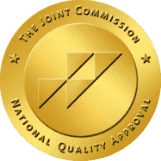Recovery Bill
of Rights for Trauma Survivors
Trauma is far too common and touches nearly every part of a person’s life. The Recovery Bill of Rights can give dignity and support to trauma survivors.

Article Contents
What is Trauma?
According to the American Psychological Association, trauma is an emotional response to a horrific event.
1 Common events that result in trauma include accidents, rape, natural disaster, and abuse.
These events impact a person’s ability to cope and function. Consequently, it causes long-term effects such as flashbacks, relationship issues, and unstable emotions. It can even result in physical symptoms, such as headaches and nausea.
Statistics on Trauma
Unfortunately, trauma is not uncommon. Researchers found that 70% of adults in the U.S. have experienced some form of trauma in their lives. That means that over 223.4 million people in the U.S. alone have experienced a traumatic event.
2
Trauma is a very common response to a disturbing experience. Research shows that 33% of youths exposed to community violence will experience some form of post-traumatic stress disorder (PTSD). Nearly all children who witnessed a parental homicide or sexual assault will develop PTSD, as well as 77% who were exposed to a school shooting.
2
What Causes Trauma?
Several events can result in trauma. Some of the most common traumatic events include:
- Grief and loss
- Witnessing acts of violence
- Cultural, intergenerational, and historical trauma
- Emotional, physical, or sexual abuse
- Childhood trauma and neglect
- Medical interventions
- War and other violence
- Accidents and natural disasters
Signs and Symptoms of Trauma
There are some ways trauma can manifest in a person. Some physical symptoms include:
- Headaches, backaches, and nausea
- Heart palpitations
- Sudden sweating
- Gastrointestinal issues
- Insomnia or hypersomnia (oversleeping)
- Easily startled by loud noises or unexpected touch
- Nightmares
- Flashbacks
- Increased susceptibility to colds and illness.
In addition to physical symptoms, trauma can also have emotional symptoms:
- Mood issues, such as anxiety, fear, or depression
- Isolation and detachment
- Trouble trusting others
- Shame, self-blame, or survivor guilt
- Outburst of rage
- Increased use of drugs or alcohol
Types of Trauma
Not all trauma is the same. They can come from different causes and result in diverse symptoms and forms of self-regulation.
Acute Trauma
This type usually results from a single distressing event. However, the psychological trauma is extreme enough to threaten a person’s security. This traumatic event creates a lasting impression and affects how a person thinks and behaves.
Acute emotional trauma usually presents in the form of excessive anxiety or panic. It can also result in insomnia and difficulty sleeping, confusion, lack of self-care, disconnection, and aggressive behavior.
Chronic Trauma
Chronic trauma is the result of prolonged, multiple, or long-term stressful events over an extended period. Domestic violence, sexual abuse, war, and bullying are some forms of chronic trauma. Several events of acute trauma can also result in chronic trauma.
Symptoms of emotional trauma can appear even years after the fact. Symptoms are often profoundly distressing. Some include unpredictable emotional outbursts, extreme anger, fatigue, and physical symptoms. The symptoms usually require help from a qualified professional for recovery from disturbing symptoms.
Complex Trauma
This form of psychological trauma is the result of exposure to multiple and varied traumatic events. They are usually in the context of an interpersonal relationship, which can make an individual feel trapped in the situation.
This form of trauma can have a severe impact and requires professional help. It can be seen in victims of childhood trauma and abuse, neglect, domestic violence, or civil unrest, although it is not limited to these events.
Secondary, or Vicarious, Trauma
Secondary trauma is a form of psychological trauma when an individual is exposed to a person who has been traumatized, heard upsetting descriptions of traumatic events, or witnessed people inflicting cruelty on one another. It is often experienced by first responders, medical professionals, mental healthcare workers, and children of traumatized parents.
Emotional trauma often manifests in symptoms similar to PTSD. Women are also more likely than men to develop secondary trauma.
Mental Illness That Stems from Trauma
Post-Traumatic Stress Disorder (PTSD)
PTSD is the upsetting re-experience of trauma. As a result, those with PTSD avoid potential trauma triggers and experience negative changes in beliefs, feelings, and hyperarousal.
People with PTSD continue to experience extreme symptoms of stress even after the traumatic event passes.
Anxiety
Some anxiety is helpful. During stressful times, anxiety allows us to respond with quickened reflexes and heightened focus. However, trauma can cause consistent anxiety when no stressors are present.
Consistent anxiety can make it difficult to cope with everyday life. Feelings become too intense, and they can negatively affect thought patterns and behavior. It can also create distress and make life unenjoyable.
Depression
Everyone feels sad or down from time to time. However, trauma can cause persistent feelings of sadness or hopelessness. Depression and PTSD do sometimes coexist. A study on veterans found that about a third of those who experienced PTSD also had symptoms of major depressive disorder.
3
Trauma and Substance Use Disorders
While the long-term effects of trauma become overwhelming, some turn to substance as a means of coping. Research has linked PTSD and substance abuse for many individuals. A traumatized person may attempt to misuse substances to “self-medicate” against memories or reminders of the trauma.
It is vital, then, that trauma is addressed and respected on the road to recovery.
What is the Recovery Bill of Rights?
The Recovery Bill of Rights states that all Americans have the right to receive the support they need to recover from substance abuse. This bill of rights calls on local communities to provide and care for the over 23 million Americans and families that currently require help for recovery.
4
The Recovery Bill of Rights appeals to all Americans and those in leadership positions to take action by building communities of recovery. The document was created by “The Faces and Voices of Recovery” to offer hope and empowerment for those on the journey to recovery.
Recovery does not happen in isolation. The Recovery Bill of Rights lays out the needs and basics to create a healing community that aids all those in it. It states the kind of care needed and policies that should be developed to support those who struggle with substance abuse.
What does the Recovery Bill of Rights for Trauma Survivors Say?
For those who experience trauma, the Recovery Bill of Rights for Trauma Survivors also works to educate people about the right of anyone with trauma.
5
Those with trauma have the right to:
5
- Manage their life according to their own values
- Direct their own recovery
- Collect information to make their own decisions about recover
- Seek help from many sources
- Decline help from anyone without explanation
- Trust their ability to heal and find allied who share that faith
- Trust allies in healing as much as a person can trust another
- Be afraid and avoid what frightens them
- Decide whether, when, and where to confront fear
- Learn by experimenting and allow mistakes.
Those with trauma also have the right to guard their boundaries and maintain integrity in communication.
Treatment for Trauma
No one has to deal with trauma alone. There are many options for those who suffer from trauma.
Therapies
There are several
therapy choices for trauma, including:
- Cognitive-behavioral therapy (CBT)
- Eye movement desensitization and reprocessing (EMDR) therapy
- Talk therapy
- Exposure therapy
There are also alternative choices for those who want or need more help:
- Pet or equine Therapy
- Massage therapy
- Hypnotherapy
- Wellness Recovery Action Planning (WRAP)
Peer Support Groups
Peer support groups offer trauma survivors a place to discuss their daily life with others who have been through similar circumstances. They can help provide a sense of connection and provide support. While not a substitute for professional counseling, peer groups can give advice and help from others who understand.
- https://www.apa.org/topics/trauma
- https://www.thenationalcouncil.org/wp-content/uploads/2013/05/Trauma-infographic.pdf?daf=375ateTbd56
- https://jamanetwork.com/journals/jamapsychiatry/fullarticle/2398184
- https://facesandvoicesofrecovery.org/about/what-we-do/public-policy/recovery-bill-of-rights/
- https://www.thenationalcouncil.org/wp-content/uploads/2012/11/Survivor-Bill-of-Rights.pdf?daf=375ateTbd56
Related Content
More About Addiction





